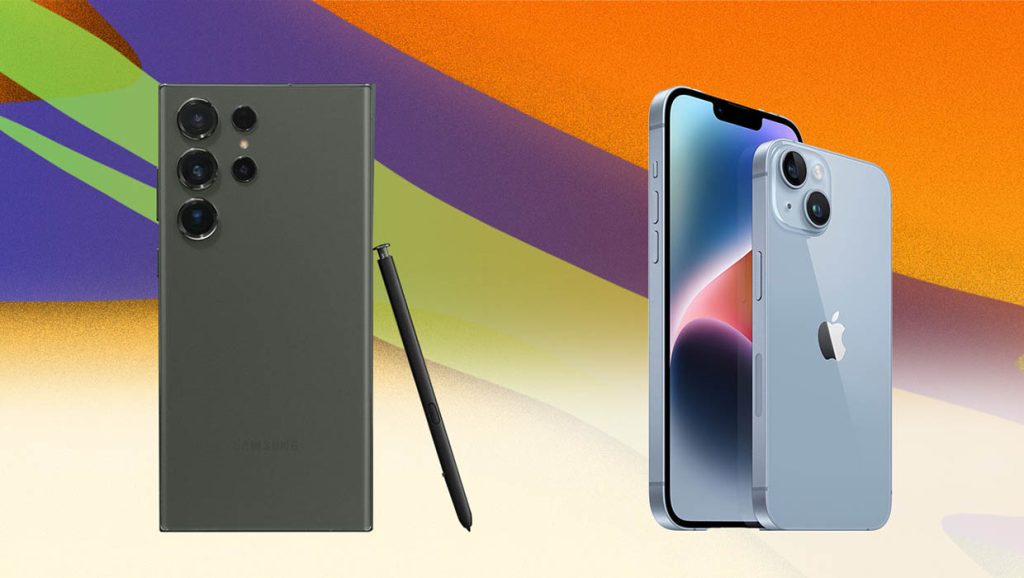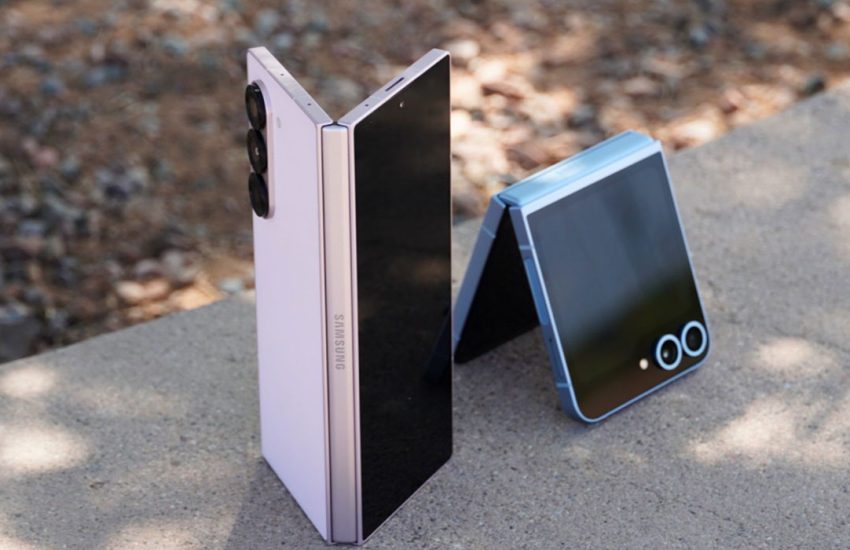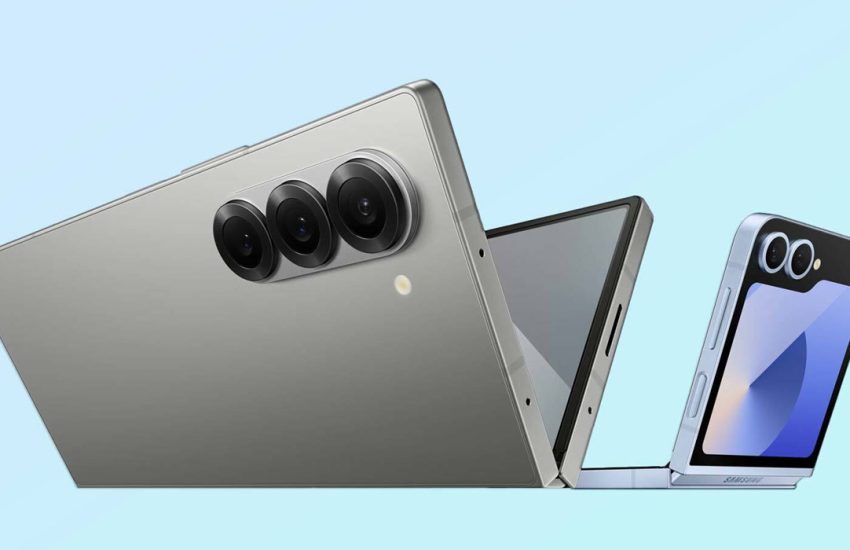iPhone 14 vs Samsung S23 – Which Flagship is Right for You?
The flagship smartphone market is filled with fierce competition, and two of the most highly anticipated devices are the iPhone 14 and Samsung S23. Apple and Samsung have been dominating the smartphone industry for years, and their latest offerings promise cutting-edge features and impressive performance. Choosing between these two flagship devices can be a challenging task, as they each have their unique strengths and appeal to different types of users.
Gazelle.com – Buy Smart. Sell Easy.
Trade in your old phone, tablet, or laptop at Gazelle.com and get instant cash offers.
Or shop certified pre-owned devices that look and work like new — all fully tested and guaranteed.
Simple. Secure. Sustainable.
Design:
Both the iPhone 14 and Samsung S23 feature sleek and premium designs, but they have distinct aesthetics. The iPhone 14 retains its iconic design with its boxy edges and glass back, while the Samsung S23 offers a more modern look with its slim bezels and rounded edges. The choice between these designs is subjective and depends on personal preference. Additionally, the iPhone 14 comes with a Lightning port, while the Samsung S23 opts for a USB Type-C port. Both devices feel solid and premium in hand, but if you prefer a more contemporary design, the Samsung S23 may be the better option for you.
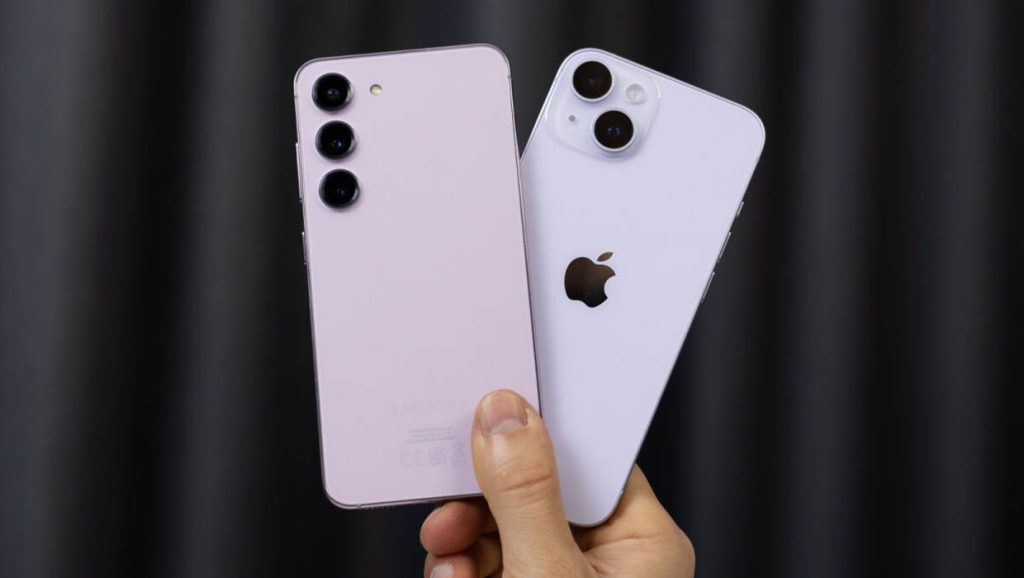
Display:
When it comes to the display, both the iPhone 14 and Samsung S23 excel in their own ways. The iPhone 14 features a Super Retina XDR display with excellent color accuracy and true blacks. However, it disappoints with its 60Hz refresh rate, especially considering that many other flagship smartphones offer 120Hz or higher. On the other hand, the Samsung S23 boasts a 6.1-inch Dynamic AMOLED display with a 120Hz refresh rate, providing a smoother and more immersive viewing experience. It also offers higher peak brightness and better outdoor visibility. If a high-refresh-rate display is important to you, the Samsung S23 takes the lead in this category.
Performance:
Both the iPhone 14 and Samsung S23 deliver impressive performance, but they rely on different hardware and software configurations. The iPhone 14 is powered by Apple’s A15 Bionic chip, which offers excellent speed and efficiency. Apple’s hardware-software integration ensures smooth and optimized performance, making it a reliable choice for demanding tasks and gaming. On the other hand, the Samsung S23 is equipped with the Snapdragon 8 Gen 2 chipset, specially designed for this device. Samsung’s One UI 5 interface enhances the overall user experience with its customizable features and smooth animations. While the iPhone 14 holds the advantage in raw benchmark scores, the Samsung S23 provides a more versatile and customizable user experience.
Camera:
The camera performance is a crucial aspect when choosing a flagship smartphone. The iPhone 14 features a dual-camera setup with a 12MP main sensor and a 12MP ultra-wide sensor. It delivers exceptional image quality with accurate colors and excellent dynamic range. Apple’s computational photography algorithms further enhance the camera’s capabilities, particularly in low-light situations. The Samsung S23, on the other hand, boasts a triple-camera system with a 50MP main sensor, a 10MP telephoto sensor, and a 12MP ultra-wide sensor. It excels in capturing detailed shots with vibrant colors, especially in well-lit conditions. Additionally, the S23 offers more versatility with its telephoto lens. Both devices are capable of recording high-quality videos, but the Samsung S23’s 8K recording capability gives it an edge in terms of resolution. Ultimately, choosing between these cameras depends on your personal photography preferences and priorities.
Battery Life:
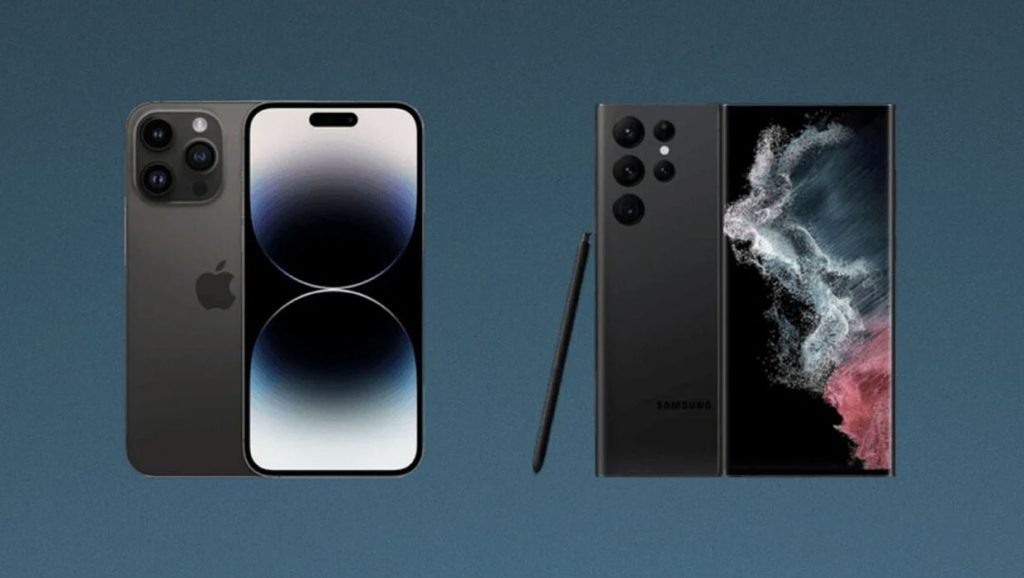
Battery life is a crucial factor to consider when selecting a flagship smartphone. The iPhone 14 comes with a 3279mAh battery, while the Samsung S23 packs a slightly larger 3900mAh battery. However, it’s important to note that the battery performance can be influenced by factors such as display refresh rate, software optimization, and individual usage patterns. Apple’s efficient hardware-software integration allows the iPhone 14 to offer excellent battery life, easily lasting a full day of moderate to heavy usage. The Samsung S23 also provides solid battery life, thanks to its optimized software and power management features. Both devices support fast charging, but the Samsung S23 offers an additional feature of reverse wireless charging, allowing you to charge other compatible devices using the smartphone. If battery life is a top priority for you, the iPhone 14 may have a slight advantage, but the difference is marginal.
Overall User Experience:
The overall user experience is a combination of various factors, including hardware, software, ecosystem, and personal preferences. Apple’s ecosystem, consisting of devices such as MacBooks, AirPods, and Apple Watches, offers seamless integration and synchronization across multiple devices. This ecosystem advantage is one of the reasons many users prefer iPhones. Additionally, Apple’s iOS provides a user-friendly and secure experience with regular software updates and a vast selection of apps optimized for iOS. On the other hand, Samsung’s One UI 5 based on Android offers a highly customizable interface and a range of features tailored to enhance productivity and personalization. Samsung’s ecosystem, including devices like Galaxy Buds and Galaxy Watches, provides its own set of advantages. Ultimately, the choice between these two devices depends on your preference for either ecosystem and your familiarity with iOS or Android.
Choosing between the iPhone 14 and Samsung S23 is a subjective decision based on personal preferences and priorities. The iPhone 14 offers a sleek design, a reliable and optimized performance, and a user-friendly ecosystem, making it an excellent choice for those already invested in the Apple ecosystem. On the other hand, the Samsung S23 features a more modern design, a vibrant display with a high refresh rate, a versatile camera system, and a customizable user interface, appealing to users who prioritize customization and flexibility.
